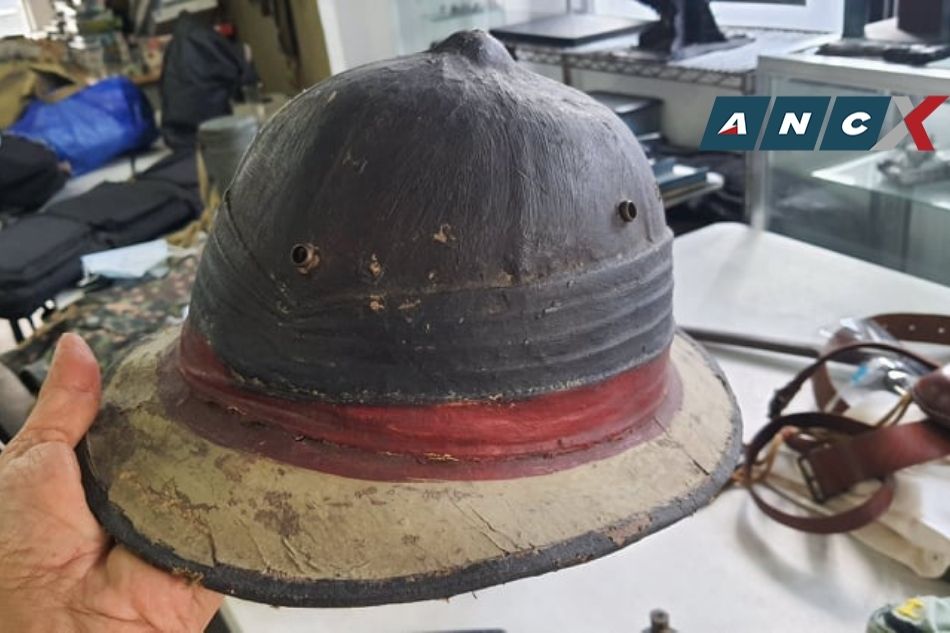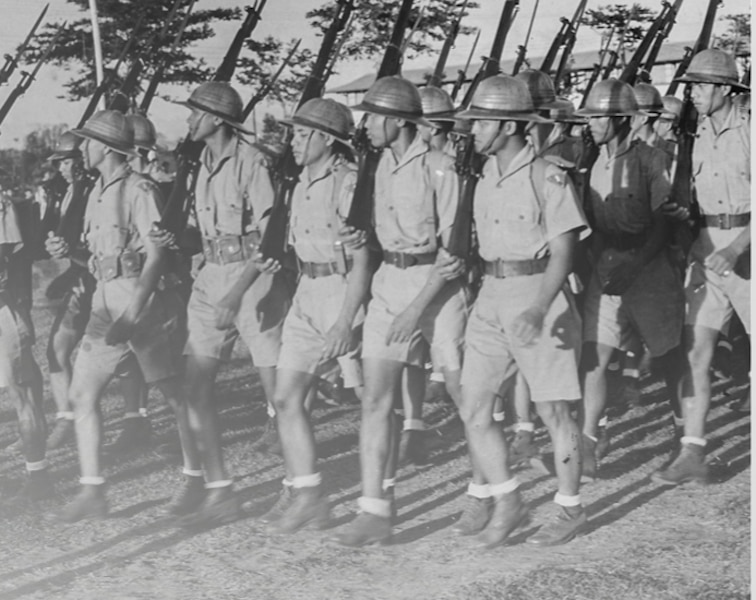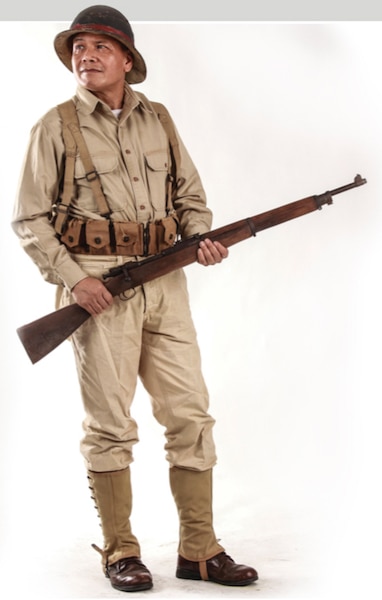Did you know that the protective head gear worn by the Philippine Army and Philippine Constabulary during World War II were made from coconut husk? They were issued guinit helmets instead of the steel helmets that were standard in most armies.
While this may sound like trivial detail, it is quite telling considering the Philippines was a major colonial commonwealth country of the United States at that time. It appears most of our troops weren’t properly equipped to go to war. Wearing a steel helmet would have protected our soldiers from artillery splinters. The guinit headgear, at best, served to shield from the heat of the sun.
A guinit helmet basically looks like a European pith helmet, except the base material is made of coconut fiber. “It has a dome-shaped center with a broad brim going all around, narrowing at the sides, and extending further front and back to shade the eyes and the nape of the neck,” describes photographer Albert Labrador, one of the authors of the book “Mandirigma, Uniforms of the Filipino Fighting Man (1935-1945).”
The helmet’s rear is squared like a fireman’s, while its interior is lined with buri. The whole thing is probably molded in a steam press, with the material possessed of a smooth or rough textured finish that was varnished-protected.
Whoever ordered the guinit helmet’s development and where it was first used have yet to be ascertained. But it’s safe to say its development was parallel with that of the first Philippine Commonwealth Army uniforms in 1935, Albert notes. The native headgear was standard issue in most Philippine army units when the war started.
Resty Aguilar, executive director at the National Historical Commission, says that the use of locally made products, guinit helmets included, was part of President Manuel L. Quezon’s efforts to spur the economy and make the Commonwealth Army self-reliant. "That's why the garrison belts used for training were made of abaca, the blankets came from Ilocos, the guinit hat from Quezon,” adds Aguilar. “Although still at the experimental stage, it could have improved through time had war not intervened."
Meanwhile, the officer’s version of the guinit helmet had a cloth ‘puggree’—a strip of cloth wound around the upper portion of a hat or helmet—like the British pith helmets used in the desert. “The arm of service was denoted by a colored band—blue for Philippine Army and red for Philippine constabulary,” offers Labrador who is a known history buff.
The Philippine Commonwealth Army did not have very advanced gear when compared to the Philippine Scouts, which were under the US Army officers. The latter had steel helmets and the latest Garand Semi-automatic rifles, which were far more advanced than the Japanese guns. “You could safely say that the Philippine Army was equipped in the late ‘30s to a World War 1 standard,” Labrador points out.
Labrador says “Mandirigma” vividly illustrates the various uniforms, equipment, and weapons used by Filipino soldiers and guerillas in WW II. Its seven chapters cover the Philippine Army, the Philippine Constabulary, the Philippine Scouts, the Guerrillas, the Filipinos in US Military Service, the Cadets, and the Japanese and their Collaborationist counterparts.
“We tried to come up with the good sections so that people can understand that hindi lang iisang klase ng tao ang lumaban against the Japanese,” explains Albert.
The book contains 74 individual photos of the re-enactors (people who dress up in historical uniforms and try to re-enact or show what it was like during that era), with descriptions of the uniforms they were wearing, and a short historical description of their unit. There are also pictures of re-enactments and layouts showing the standard equipment used. To add more depth, period pictures were included, mostly from the National Archives of the United States.
Atty. Tony Feredo, a WWII history fanatic, also one of the authors of “Mandirigma,”says the book provides a more accurate depiction of our WWII heroes. “It shows that there was actually a time that we fought for something. Meron tayong pinaglaban. I think it is a virtue that we have to still hold up to this day. Nag-unite ang mga Pilipino, namundok tayo para lumaban, hindi para tumakbo. Lumaban tayo sa mga manlulupig dito sa ating bansa,” he says. Who cares if we did it with coconut husks on our heads?




